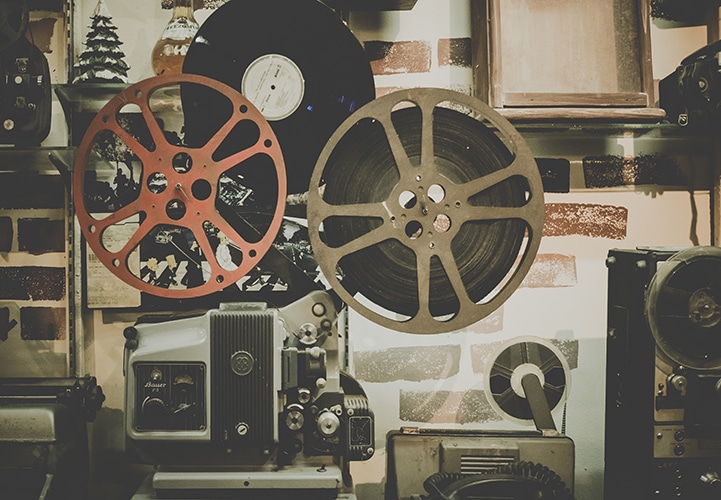In this interview, Julia Borsatto, an audiovisual translation specialist discusses her profession and the controversial project initiated by Arte.
While she was more interested in writing scripts and especially dialogues, audiovisual translation gradually came to her. Today, this young woman of Italian-Spanish origin has made audiovisual translation her main business. From Mario Monicelli to Pier Paolo Pasolini, through Raoul Ruiz, but also “ The Young and the Restless”, she has dubbed and subtitled almost every film genres in four languages.
Member of ATAA from 2014, she describes the status of translator as being “rather peculiar” and continues: “we work intermittently and at the same time, it isn’t considered as intermittent. It is probably one of the least advantageous statutes that exists in France. So, I think there is a real need to regroup and defend ourselves. When you are an employee and union member, you can assert your rights and, above all, you can defend your work more easily. In our case, by doing a job where everyone is self-employed, it is important that there is at least one association that is created, for lack of a union.”
Indeed, the collaborative subtitling project launched by Arte and sponsored by the European Commission proves – beyond the question of respect for copyright, labor law and the legal aspect of this initiative – that the road to recognition for this shadow profession is still long. As a reminder, one of the most emblematic cultural channels in France has been testing Fansubbing by having the content of certain programs such as Metropolis or BiTS translated by Internet users. For Arte, translating this content into Romanian, Danish or even Croatian is the mission to “highlight European linguistic diversity and expand the distribution of audiovisual programs in Europe”.
In this interview, this audiovisual translation specialist talks to us about her profession and gives us advice on this controversial project initiated by Arte.
What are the peculiarities of dubbing and subtitling?
The major technical problem that subtitling presents is a problem of temporality: the time needed to understand through reading and writing is much longer than through speaking. That is, we understand things a lot quicker when we hear it than when we read it. Therefore we are forced to condense information to respect the rhythm of the oral dialogue. But, it also depends on the film we’re talking about. Me, for example, I translate a lot of Italian productions and Italian films are generally very conversational. If everything was reproduced, subtitles would be unreadable and the audience would spend their time reading. So, in this case, we really face a text volume problem. Personally, I find that there is also an issue with sound. Some languages resemble each other a little, which is the case for French and Italian and, as a result, you have to try not to lose the spectator by moving too far away from the sounds when certain words are recognizable. Not to mention that the sounds and the rhythm contribute to the final form of the film.
In dubbing, it is above all a question of synchronization. We lose the actor’s original language but there is still the lip movements, the gestures and the rhythm of the sentence that we must try to render into the target language. In this case, the problem of text volume no longer exists. On the contrary, we need to keep the entire initial volume, sometimes even adding more. In fact, there is a visual dimension of translation for dubbing that isn’t found in subtitling, where the dimension is more auditory and the original language being always present. In subtitling, we stop a sentence when it finishes in the original version. While in dubbing, you can possibly make an actor’s speech lag behind even when there is nothing being said in the original version, because the French word needs to include three lip movements whereas in the original version, the character’s mouth is wide open.
Subtitling is in fashion, what is the future of dubbing?
There are two aspects in the response. A lot of viewers prefer to hear the original language, which they can sometimes understand. But regarding series, the problem is also related to time and cost. I think that it’s one of the reasons for the surge in subtitling right now. Fansubbers make subtitles of varying quality in one night that are released almost instantaneously with the country of origin. So there is a possible immediacy in subtitling which is not technically feasible in dubbing, which, beyond translators, also requires the work of actors, sound engineers, etc. In terms of cost, subtitling is also more affordable but I think that there will always be people who prefer dubbing. In general, people who opt for subtitling do it, because it is able to keep the sounds, the exoticism of the language and the culture of origin. Those who choose dubbing often say that they lose a lot of the film’s aesthetics by having to spend time reading. These are different schools and I think that both will continue. After that, it also depends on the country. In France, for example, there is a real culture for subtitling, which isn’t the case in Italy where all the movies are dubbed.
What do you think of the collaborative subtitling launched by Arte?
I am perhaps not the person most likely to talk about this because I don’t know all the specifics and reasons for this project. But I find it very surprising. On the one hand, because it was initiated by Arte which is a major French cultural channel. I think that it brings two things to light. The first is an apparent lack of consideration for the profession. The initiators of this project seem to assume that anyone can subtitle and anyone is going to do it. The second is that people, who will be responsible for these translations, even if they’re amateurs, are going to volunteer their time to do this, without being paid in return.
On the other hand, what leaves me even more puzzled than the initiative from Arte – is the fact that the project is financed by the European Commission. This means that it supports and sponsors a project which seems largely based on exploiting other people’s time and knowledge without any compensation. And we wonder a little about what the grant amount will be used for, as there will be no salaries. At a time of a fragile European construction, and particularly these days, this choice leaves us a little confused from a political point of view. Generally, the tendency to want to pay people at a discount, to try to extract as much as possible from them, is rather the work of private, profit-oriented companies, which are themselves subject to competition, etc. It’s a liberal economy. That a project based on this type of dynamic would be financed by the European Commission, it makes you wonder.
What impact will this project have on the translator’s status?
I don’t know. According to Arte, these translations would not have been requested from professionals anyway. The risk is that people get more and more used to poor subtitling and it becomes the “acceptable” standard, in other words translation is dumbed down. I don’t think that there will be financial implications for us because there are more things to translate, exports of films and series, etc. So I believe that instead there is more and more work. I am quite optimistic. But then we have to see under what conditions we do and are allow to do this work. The current trend shows that we want to spend less and less time and money on each project.
What does this mean for the languages that are going to be translated?
I imagine that in this case, Arte considers that there a lot more viewers who are more interested in English than Romanian. But, at the same time, you might as well not translate Romanian if you’re going to translate it wrong. There is a so-called desire to export certain things to all countries. And then, it gets done by people considered valid enough to do it, but apparently not enough to be paid. In short, we do it but we do it badly.
Does that mean that a bilingual person is not capable of producing a good translation?
Not at all. A bilingual person is perfectly able of creating a good translation. But a translation is not just finding an equivalent in another language. There is context, a process of adaptation and technical constraints. Regarding dubbing, there is a problem with synchronization, and especially the pace. We try to adapt as much as possible to the movements of the actors’ lips, the character’s rhythm, etc. In subtitling, the problems we encounter are the number of characters, the reading time which is different from the time it takes for oral comprehension. And then, there are the peculiarities. In my family, there have always been several languages, translation was ever-present. I have often heard this phrase: “That’s untranslatable “. Becoming a translator has this troubling aspect: all of a sudden we’re here for that, too, to translate the untranslatable. It is said that the psychological structure of an individual is built on the language framework of the language they learn to speak. This is what makes the relationship to humor and poetry, for example, so particular to each country, even to each region in the case of regional dialects that are very present. The rhythm of the language is also different. In French, the poetic reference structure is the alexandrine, which is based on 12 syllables. In Italy, it is the hendecasyllable which contains 11 syllables. Translation must take into account all these parameters and constraints. Finding a semantic equivalent is not enough. It’s a real rewrite. And at the same time, it is said that a good translation in cinema is a translation that can’t be seen. It’s all a paradox, it’s our own “koan”. It requires an overall view and know-how that is often the result of years of reflection. It is not for nothing that someone can only excel in an art after having been confronted at length with its fundamental problems.
Translation into English: Chloe Findlay
Discover our translation agency.



